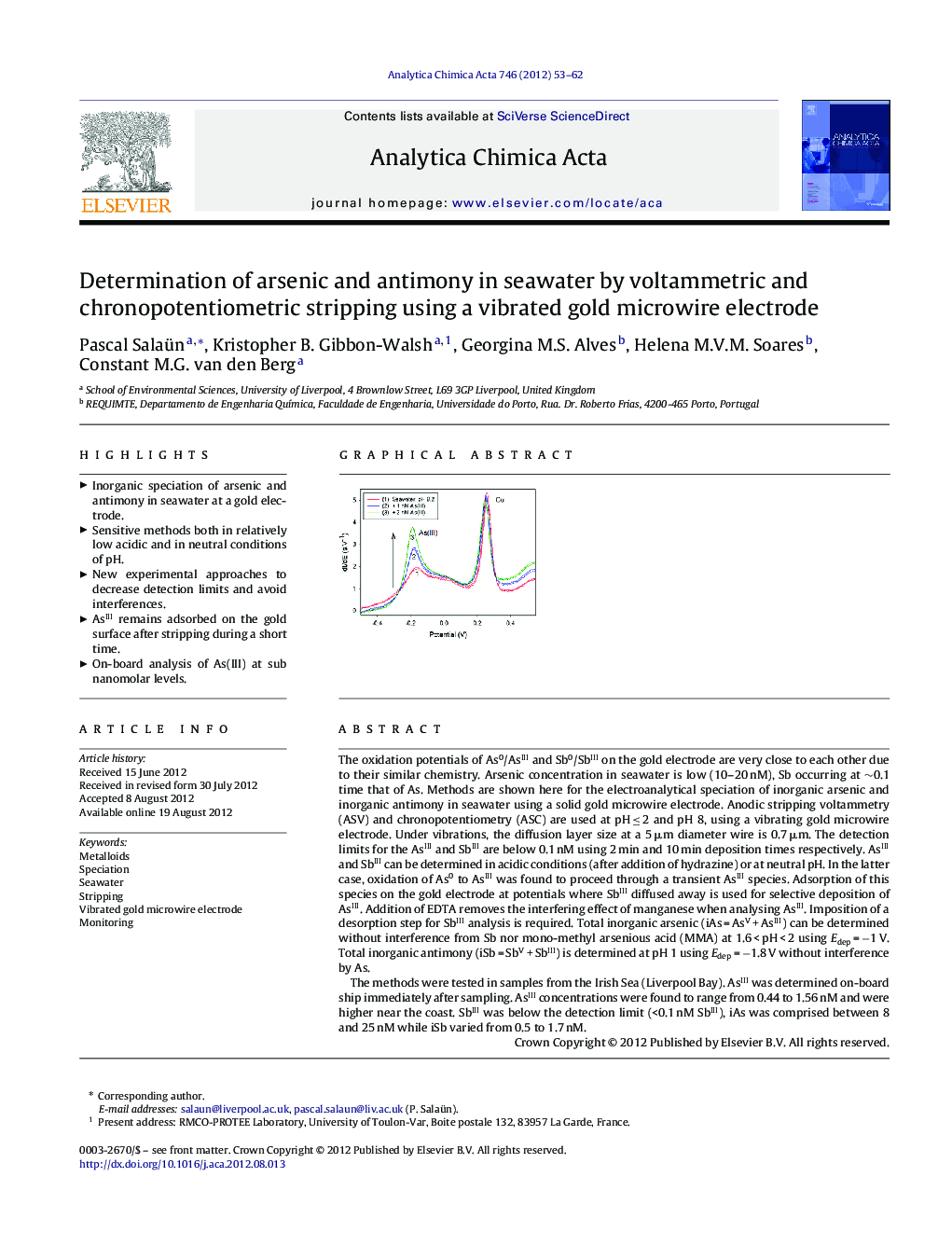| Article ID | Journal | Published Year | Pages | File Type |
|---|---|---|---|---|
| 1165369 | Analytica Chimica Acta | 2012 | 10 Pages |
The oxidation potentials of As0/AsIII and Sb0/SbIII on the gold electrode are very close to each other due to their similar chemistry. Arsenic concentration in seawater is low (10–20 nM), Sb occurring at ∼0.1 time that of As. Methods are shown here for the electroanalytical speciation of inorganic arsenic and inorganic antimony in seawater using a solid gold microwire electrode. Anodic stripping voltammetry (ASV) and chronopotentiometry (ASC) are used at pH ≤ 2 and pH 8, using a vibrating gold microwire electrode. Under vibrations, the diffusion layer size at a 5 μm diameter wire is 0.7 μm. The detection limits for the AsIII and SbIII are below 0.1 nM using 2 min and 10 min deposition times respectively. AsIII and SbIII can be determined in acidic conditions (after addition of hydrazine) or at neutral pH. In the latter case, oxidation of As0 to AsIII was found to proceed through a transient AsIII species. Adsorption of this species on the gold electrode at potentials where SbIII diffused away is used for selective deposition of AsIII. Addition of EDTA removes the interfering effect of manganese when analysing AsIII. Imposition of a desorption step for SbIII analysis is required. Total inorganic arsenic (iAs = AsV + AsIII) can be determined without interference from Sb nor mono-methyl arsenious acid (MMA) at 1.6 < pH < 2 using Edep = −1 V. Total inorganic antimony (iSb = SbV + SbIII) is determined at pH 1 using Edep = −1.8 V without interference by As.The methods were tested in samples from the Irish Sea (Liverpool Bay). AsIII was determined on-board ship immediately after sampling. AsIII concentrations were found to range from 0.44 to 1.56 nM and were higher near the coast. SbIII was below the detection limit (<0.1 nM SbIII), iAs was comprised between 8 and 25 nM while iSb varied from 0.5 to 1.7 nM.
Graphical abstractFigure optionsDownload full-size imageDownload as PowerPoint slideHighlights► Inorganic speciation of arsenic and antimony in seawater at a gold electrode. ► Sensitive methods both in relatively low acidic and in neutral conditions of pH. ► New experimental approaches to decrease detection limits and avoid interferences. ► AsIII remains adsorbed on the gold surface after stripping during a short time. ► On-board analysis of As(III) at sub nanomolar levels.
